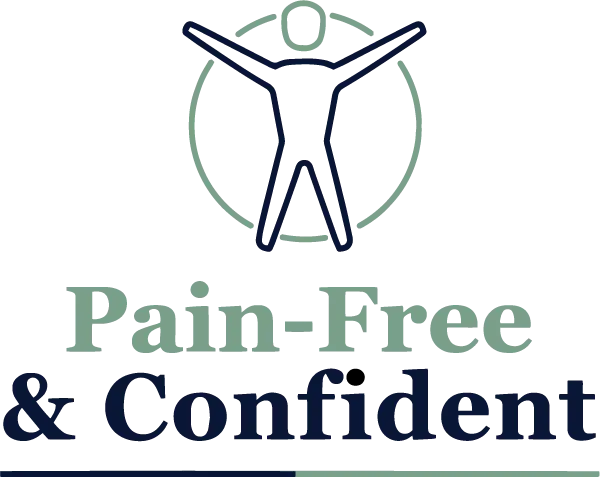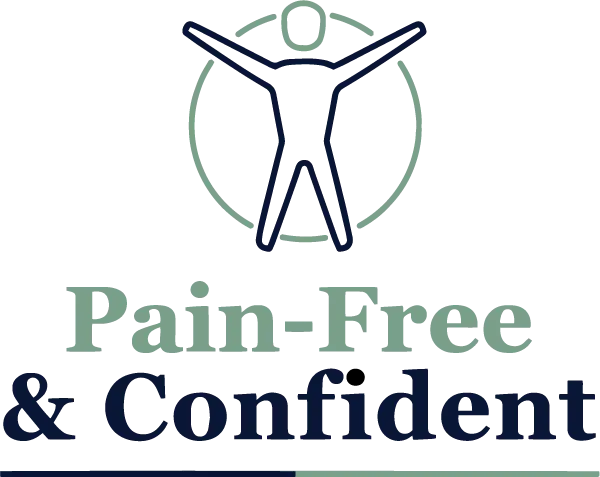Understanding and Tracking Your Pain
Know Your Enemy/Pain
Know Your Enemy/PainAs the Chinese military general, strategist and philosopher Sun Tzu said “Know thine enemy” (in his own language of course). Without knowing the extent of your pain, and it’s impact on your life, how can you hope to overcome it?
The great leadership/management guru Peter F. Drucker emphasised the importance of measuring by stating “What is measured, improves”.
So for any golfer seeking to overcome persistent pain, it’s vitally important to have a measure.
Yet pain is often hard to quantify. There are also many ways of describing pain as it can be different for everyone. It might be sharp, dull, constant, or come and go.
To start, think about when and where you feel pain. Is it in the morning, after golf, or maybe at night? Knowing this can help you figure out what's causing it and how to make it better.
Track Your Progress
Once you know your pain, it’s important to keep track of it. Think of this like keeping score in a golf game. You want to see how you’re doing over time. You can use a simple notebook or a pain tracking app on your phone. Write down how much pain you feel each day. You can use a scale from 0 to 10, where 0 is no pain and 10 is the worst pain. This will help you see if your pain is getting better, worse, or staying the same.
A more objective way to track progress, rather than tracking the pain itself, is to track the impact pain has on your life. These are called Pain Disability assessment tools, and there are a number of them available. We use The Backscore to track progress - this is a modified version of a clinically validated pain disability assessment tool, originally designed by Roland & Morris (1983).
Pain and Activity Diary
Along with tracking your pain, it’s helpful to keep a diary of your activities. This means writing down what you do each day, especially anything that might affect your pain. For example, if you play golf, note how long you played and if it made your pain better or worse. Also write down other activities like walking, sitting for a long time, or lifting heavy things. This diary can help you see patterns and figure out what activities help or aggravate your pain.
Understanding Your Limits
Everyone has limits, especially when dealing with pain. It’s important to know what your body can handle. This doesn’t mean you can’t do the things you love, like playing golf. It just means you need to listen to your body. If something hurts, don’t push through the pain (see the “Reduce” practice). Take a break and rest. By knowing your limits, you can avoid making your pain worse and still enjoy your activities.
Setting Goals
Having goals can help you stay motivated and see progress. Start with small, achievable goals. For example, if your pain is keeping you from playing a full round of golf, set a goal to play just a few holes. As your pain improves, you can slowly increase your goals. Maybe next you aim to play nine holes, then a full round. By setting and reaching these small goals, you can build up your strength and confidence.
Feedback and Adjustments
Finally, it’s important to get feedback and make adjustments as needed. This means talking to someone knowledgeable about your pain and progress. They can help you figure out what’s working and what’s not. Maybe certain exercises are helping, or perhaps you need to change how you swing your golf club (I know this is dangerous territory for many golfers). By getting feedback and making adjustments, you can continue to improve and manage your pain.
Putting It All Together
Measuring your pain is like being a detective. You need to gather clues, track changes, and make adjustments. By understanding your pain, keeping track of it, knowing your limits, setting goals, and getting feedback, you can take control of your pain. This will help you enjoy golf and other activities without letting pain hold you back.
Remember, dealing with pain is a journey. It might take time to see big changes, but each small step is progress. Keep measuring and tracking your pain, and you’ll be on your way to feeling better and playing golf with confidence.
Tools to Help You Measure Your Pain
To make tracking easier, here are some tools you can use:
Pain Diary Notebook: Keep a small notebook with you to jot down your pain levels and activities each day.
Pain Tracking Apps: There are many apps available that can help you track your pain on your phone.
Pain Scale Chart: Use a chart that shows a scale from 0 to 10 to help you describe your pain.
Tips for Success
- Be Consistent: Try to track your pain at the same time each day. This can help you see more accurate patterns.
- Be Honest: Don’t downplay or exaggerate your pain. Write down exactly how you feel.
- Use Reminders: Set a reminder on your phone or leave a note somewhere you’ll see it to help you remember to track your pain.
Sharing Your Pain Diary
When you visit your doctor or therapist, bring your pain diary with you. This can give them a clear picture of what you’re experiencing. They can use this information to create a treatment plan that’s right for you. It also helps them see if the treatment is working or if changes need to be made.
Why Measuring Your Pain Matters
Measuring your pain is important because it helps you understand it better. It can show you what’s making your pain worse and what’s helping it get better. This knowledge gives you power. You can make informed choices about your activities, treatments, and goals. It also helps your healthcare team provide the best care for you.
Stay Positive
Tracking pain can sometimes feel frustrating, especially on tough days. But remember, it’s a tool to help you get better. Celebrate the small wins, like a day with less pain or being able to play an extra hole of golf. Every step forward is a victory.
Conclusion
Measuring your pain is one of 6 key practices for overcoming persistent lower back pain. By knowing your pain, tracking your progress, keeping a pain diary, understanding your limits, setting goals, and getting feedback, you can take control of your pain. This will help you play golf and enjoy other activities with confidence and less pain. Keep at it, and remember that each small step brings you closer to a pain-free life.

Gavin Routledge
Measure
Understanding and Tracking Your Pain
Know Your Enemy/Pain
Know Your Enemy/PainAs the Chinese military general, strategist and philosopher Sun Tzu said “Know thine enemy” (in his own language of course). Without knowing the extent of your pain, and it’s impact on your life, how can you hope to overcome it?
The great leadership/management guru Peter F. Drucker emphasised the importance of measuring by stating “What is measured, improves”.
So for any golfer seeking to overcome persistent pain, it’s vitally important to have a measure.
Yet pain is often hard to quantify. There are also many ways of describing pain as it can be different for everyone. It might be sharp, dull, constant, or come and go.
To start, think about when and where you feel pain. Is it in the morning, after golf, or maybe at night? Knowing this can help you figure out what's causing it and how to make it better.
Track Your Progress
Once you know your pain, it’s important to keep track of it. Think of this like keeping score in a golf game. You want to see how you’re doing over time. You can use a simple notebook or a pain tracking app on your phone. Write down how much pain you feel each day. You can use a scale from 0 to 10, where 0 is no pain and 10 is the worst pain. This will help you see if your pain is getting better, worse, or staying the same.
A more objective way to track progress, rather than tracking the pain itself, is to track the impact pain has on your life. These are called Pain Disability assessment tools, and there are a number of them available. We use The Backscore to track progress - this is a modified version of a clinically validated pain disability assessment tool, originally designed by Roland & Morris (1983).
Pain and Activity Diary
Along with tracking your pain, it’s helpful to keep a diary of your activities. This means writing down what you do each day, especially anything that might affect your pain. For example, if you play golf, note how long you played and if it made your pain better or worse. Also write down other activities like walking, sitting for a long time, or lifting heavy things. This diary can help you see patterns and figure out what activities help or aggravate your pain.
Understanding Your Limits
Everyone has limits, especially when dealing with pain. It’s important to know what your body can handle. This doesn’t mean you can’t do the things you love, like playing golf. It just means you need to listen to your body. If something hurts, don’t push through the pain (see the “Reduce” practice). Take a break and rest. By knowing your limits, you can avoid making your pain worse and still enjoy your activities.
Setting Goals
Having goals can help you stay motivated and see progress. Start with small, achievable goals. For example, if your pain is keeping you from playing a full round of golf, set a goal to play just a few holes. As your pain improves, you can slowly increase your goals. Maybe next you aim to play nine holes, then a full round. By setting and reaching these small goals, you can build up your strength and confidence.
Feedback and Adjustments
Finally, it’s important to get feedback and make adjustments as needed. This means talking to someone knowledgeable about your pain and progress. They can help you figure out what’s working and what’s not. Maybe certain exercises are helping, or perhaps you need to change how you swing your golf club (I know this is dangerous territory for many golfers). By getting feedback and making adjustments, you can continue to improve and manage your pain.
Putting It All Together
Measuring your pain is like being a detective. You need to gather clues, track changes, and make adjustments. By understanding your pain, keeping track of it, knowing your limits, setting goals, and getting feedback, you can take control of your pain. This will help you enjoy golf and other activities without letting pain hold you back.
Remember, dealing with pain is a journey. It might take time to see big changes, but each small step is progress. Keep measuring and tracking your pain, and you’ll be on your way to feeling better and playing golf with confidence.
Tools to Help You Measure Your Pain
To make tracking easier, here are some tools you can use:
Pain Diary Notebook: Keep a small notebook with you to jot down your pain levels and activities each day.
Pain Tracking Apps: There are many apps available that can help you track your pain on your phone.
Pain Scale Chart: Use a chart that shows a scale from 0 to 10 to help you describe your pain.
Tips for Success
- Be Consistent: Try to track your pain at the same time each day. This can help you see more accurate patterns.
- Be Honest: Don’t downplay or exaggerate your pain. Write down exactly how you feel.
- Use Reminders: Set a reminder on your phone or leave a note somewhere you’ll see it to help you remember to track your pain.
Sharing Your Pain Diary
When you visit your doctor or therapist, bring your pain diary with you. This can give them a clear picture of what you’re experiencing. They can use this information to create a treatment plan that’s right for you. It also helps them see if the treatment is working or if changes need to be made.
Why Measuring Your Pain Matters
Measuring your pain is important because it helps you understand it better. It can show you what’s making your pain worse and what’s helping it get better. This knowledge gives you power. You can make informed choices about your activities, treatments, and goals. It also helps your healthcare team provide the best care for you.
Stay Positive
Tracking pain can sometimes feel frustrating, especially on tough days. But remember, it’s a tool to help you get better. Celebrate the small wins, like a day with less pain or being able to play an extra hole of golf. Every step forward is a victory.
Conclusion
Measuring your pain is one of 6 key practices for overcoming persistent lower back pain. By knowing your pain, tracking your progress, keeping a pain diary, understanding your limits, setting goals, and getting feedback, you can take control of your pain. This will help you play golf and enjoy other activities with confidence and less pain. Keep at it, and remember that each small step brings you closer to a pain-free life.

Gavin Routledge
Our Mission
Our mission is to empower the world’s golfers to build a strong pain-free lower back they can have confidence in, and to optimise their health so that they can look forward to golfing into their 90s.
CONTACT INFORMATION
10 Atholl Place Edinburgh EH3 8HP


